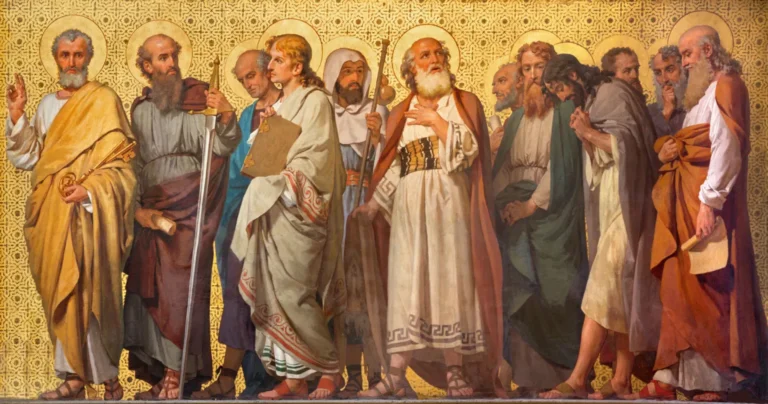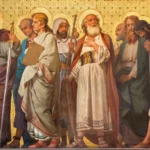If you’ve ever heard that early Christians couldn’t agree on which books belonged in the Bible, you’re not alone. The story goes something like this: For centuries, believers were all over the place—each church reading its own set of books, disagreeing constantly, and no one really knowing which writings were truly inspired.
It paints a picture of total confusion—a literary free-for-all that only got sorted out hundreds of years later by a church council. But here’s the good news:
That picture is more myth than history.
The truth is, while there were some discussions and debates, the early church had remarkable agreement on the core New Testament books from a very early time. Let’s clear up this common misconception and see why the New Testament canon wasn’t the product of chaos, but of clarity.
What Is Bible Canon?
The word “Canon” comes from a Greek word that means “rule” or “standard.” In biblical terms, it refers to the officially recognized collection of inspired Scripture. When we talk about the “Bible canon,” we’re referring to the official collection of books that Christians recognize as the inspired Word of God.
For the New Testament, that means the 27 books—from Matthew to Revelation—that the early church received, preserved, and passed down as Scripture. These weren’t just books the church liked—they were books the church believed had authority because they came from Jesus, through His apostles and their close associates.
Think of canon as a measuring stick. The early church used that standard to evaluate which writings were truly from God and which ones weren’t. That’s why the canon matters: it helps us know what belongs in the Bible—and what doesn’t.
The Core Collection Came Together Early
Today, we recognize 27 books in the New Testament as Bible Canon. But did you know that by the middle of the 2nd century—just a few years after the last New Testament book was written—most churches were already reading and affirming at least 22 of those 27 books?
These “core” books included:
- The four Gospels (Matthew, Mark, Luke, and John)
- The book of Acts
- The 13 letters of Paul
- 1 Peter, 1 John, and Revelation
That’s a large portion of the New Testament, already widely accepted and in use across the Christian world long before any official church council ever discussed canon lists.
What About the Other Five Books?
The remaining five books—2 John, 3 John, Jude, James, and 2 Peter—took a bit longer to be universally affirmed. And that’s understandable. These books are short, less frequently quoted, and took time to circulate across the ancient world.
In a time with no internet or printing press, it makes sense that smaller letters might not be known or recognized immediately in every region. But disagreement over a handful of smaller books doesn’t mean there was chaos—it simply means the church took the process seriously and didn’t rush to conclusions.
Historical Evidence of Early Agreement
Let’s look at two major pieces of evidence that show early agreement on the New Testament canon:
The Muratorian Fragment (c. AD 170–200)
This is one of the oldest known lists of New Testament books. You can read the full translation and scholarly notes on the Muratorian Fragment here.
It includes 22 of the 27 books we have today—including all four Gospels, Acts, Paul’s letters, and others. That’s strong proof that by the end of the second century, there was already a functioning canon in many Christian communities.
Irenaeus of Lyons (c. AD 180)
Irenaeus, a bishop and theologian, openly defended the fourfold Gospel and quoted extensively from nearly every New Testament book.
He wrote:
“It is not possible that the Gospels can be either more or fewer in number than they are.” — Against Heresies, Book 3, Chapter 11
He wasn’t inventing something new—he was affirming what churches had already come to recognize. This tells us that the idea of four Gospels wasn’t debated; it was a settled truth within a few generations of Jesus’ resurrection.
Why This Matters
The early church didn’t decide the canon by popular vote or political power. They recognized what was already being used, already bearing fruit, and already understood to carry the authority of Christ. While the full recognition of all 27 books took time, the central foundation of the New Testament was never in question for long.
You can be confident that the Bible you hold today is rooted in the historical, spiritual, and theological life of the earliest Christians—people who knew the apostles, heard their teachings, and saw the power of God’s Word firsthand.
Conclusion: Not Chaos—Clarity
Don’t let the noise of modern skeptics shake your confidence in the New Testament. The early church wasn’t wandering in confusion. From the very beginning, they recognized the voice of their Shepherd in these writings (John 10:27).
There was discussion. There was discernment. But there was never chaos. And by God’s providence, what needed to be known was known.
Want to explore more? Keep reading the other blogs in this series as we walk through the 7 big questions people ask about the Bible’s trustworthiness.
Read the rest of the series:
- Did the New Testament Writers Know They Were Writing Scripture?
- Was There Chaos Over Which Books Belonged in the New Testament?
- Did the Church Really Not Have a New Testament Until the 4th Century?
- Are the Apocryphal Gospels Just as Valid as Matthew, Mark, Luke, and John?
- Were the Lost Gospels as Popular as the Ones in the Bible?
- Did the Church Choose Which Books Belong in the New Testament?
- How Can We Be Sure We Have the Right Books in the Bible?
Subscribe to our newsletter to get each post delivered straight to your inbox as we continue walking through the powerful and trustworthy story of the Bible.









